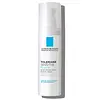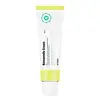What's inside
What's inside
 Key Ingredients
Key Ingredients

 Benefits
Benefits

 Concerns
Concerns

No concerns
 Ingredients Side-by-side
Ingredients Side-by-side

Hamamelis Virginiana Water
AstringentButylene Glycol
HumectantCetearyl Alcohol
Emollient1,2-Hexanediol
Skin ConditioningIsotridecyl Isononanoate
EmollientGlyceryl Stearate
EmollientNiacinamide
SmoothingPolymethylsilsesquioxane
Citrus Aurantium Dulcis Oil
MaskingSalvia Sclarea Oil
MaskingArgania Spinosa Kernel Oil
EmollientRhus Semialata Gall Extract
Skin ConditioningSesamum Indicum Seed Oil
EmollientSerenoa Serrulata Fruit Extract
Skin ConditioningCinnamomum Cassia Bark Extract
MaskingPentylene Glycol
Skin ConditioningMethyl Methacrylate Crosspolymer
Ammonium Acryloyldimethyltaurate/Vp Copolymer
Caprylic/Capric Triglyceride
MaskingCaprylyl Methicone
Skin ConditioningHydroxyacetophenone
AntioxidantTromethamine
BufferingAdenosine
Skin ConditioningHexylene Glycol
EmulsifyingCapryloyl Glycine
CleansingBeta-Sitosterol
Emulsion StabilisingSarcosine
Skin ConditioningTocopherol
AntioxidantCarbomer
Emulsion StabilisingDisodium EDTA
Limonene
PerfumingLinalool
PerfumingHamamelis Virginiana Water, Butylene Glycol, Cetearyl Alcohol, 1,2-Hexanediol, Isotridecyl Isononanoate, Glyceryl Stearate, Niacinamide, Polymethylsilsesquioxane, Citrus Aurantium Dulcis Oil, Salvia Sclarea Oil, Argania Spinosa Kernel Oil, Rhus Semialata Gall Extract, Sesamum Indicum Seed Oil, Serenoa Serrulata Fruit Extract, Cinnamomum Cassia Bark Extract, Pentylene Glycol, Methyl Methacrylate Crosspolymer, Ammonium Acryloyldimethyltaurate/Vp Copolymer, Caprylic/Capric Triglyceride, Caprylyl Methicone, Hydroxyacetophenone, Tromethamine, Adenosine, Hexylene Glycol, Capryloyl Glycine, Beta-Sitosterol, Sarcosine, Tocopherol, Carbomer, Disodium EDTA, Limonene, Linalool
 Reviews
Reviews

Ingredients Explained
These ingredients are found in both products.
Ingredients higher up in an ingredient list are typically present in a larger amount.
This ingredient is an emollient, solvent, and texture enhancer. It is considered a skin-softener by helping the skin prevent moisture loss.
It helps thicken a product's formula and makes it easier to spread by dissolving clumping compounds.
Caprylic Triglyceride is made by combining glycerin with coconut oil, forming a clear liquid.
While there is an assumption Caprylic Triglyceride can clog pores due to it being derived from coconut oil, there is no research supporting this.
Learn more about Caprylic/Capric TriglycerideNiacinamide is a multitasking form of vitamin B3 that strengthens the skin barrier, reduces pores and dark spots, regulates oil, and improves signs of aging.
And the best part? It's gentle and well-tolerated by most skin types, including sensitive and reactive skin.
You might have heard of "niacin flush", or the reddening of skin that causes itchiness. Niacinamide has not been found to cause this.
In very rare cases, some individuals may not be able to tolerate niacinamide at all or experience an allergic reaction to it.
If you are experiencing flaking, irritation, and dryness with this ingredient, be sure to double check all your products as this ingredient can be found in all categories of skincare.
When incorporating niacinamide into your routine, look out for concentration amounts. Typically, 5% niacinamide provides benefits such as fading dark spots. However, if you have sensitive skin, it is better to begin with a smaller concentration.
When you apply niacinamide to your skin, your body converts it into nicotinamide adenine dinucleotide (NAD). NAD is an essential coenzyme that is already found in your cells as "fuel" and powers countless biological processes.
In your skin, NAD helps repair cell damage, produce new healthy cells, support collagen production, strengthen the skin barrier, and fight environmental stressors (like UV and pollution).
Our natural NAD levels start to decline with age, leading to slower skin repair, visible aging, and a weaker skin barrier. By providing your skin niacinamide, you're recharging your skin's NAD levels. This leads to stronger, healthier, and younger looking skin.
Another name for vitamin B3 is nicotinamide. This vitamin is water-soluble and our bodies don't store it. We obtain Vitamin B3 from either food or skincare. Meat, fish, wheat, yeast, and leafy greens contain vitamin B3.
The type of niacinamide used in skincare is synthetically created.
Learn more about NiacinamidePentylene glycol is typically used within a product to thicken it. It also adds a smooth, soft, and moisturizing feel to the product. It is naturally found in plants such as sugar beets.
The hydrophilic trait of Pentylene Glycol makes it a humectant. As a humectant, Pentylene Glycol helps draw moisture from the air to your skin. This can help keep your skin hydrated.
This property also makes Pentylene Glycol a great texture enhancer. It can also help thicken or stabilize a product.
Pentylene Glycol also acts as a mild preservative and helps to keep a product microbe-free.
Some people may experience mild eye and skin irritation from Pentylene Glycol. We always recommend speaking with a professional about using this ingredient in your routine.
Pentylene Glycol has a low molecular weight and is part of the 1,2-glycol family.
Learn more about Pentylene Glycol